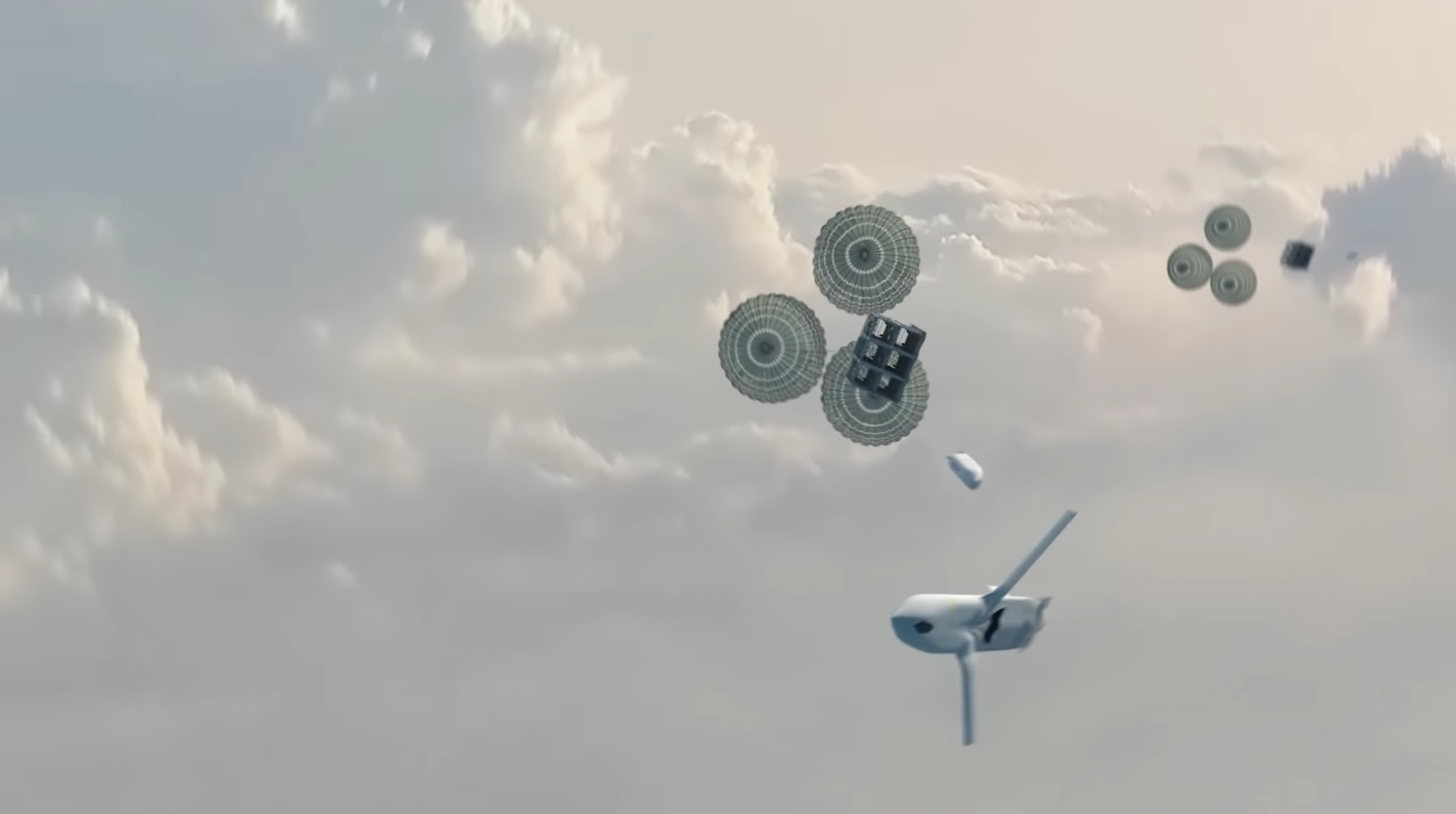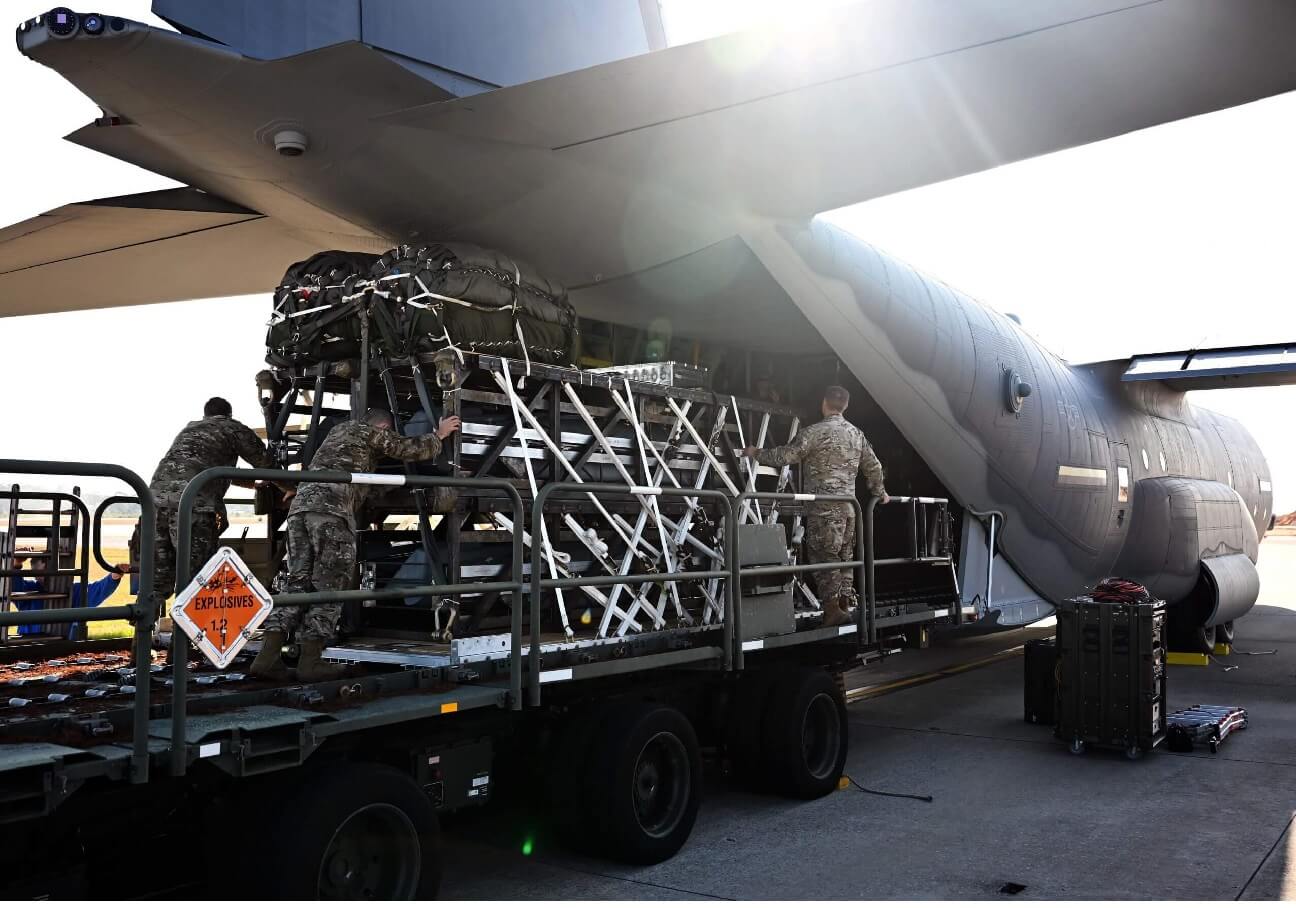The United States Air Force (USAF) wants to expand an under-development capability that uses existing transport aircraft available to it and its allies in the Western Pacific to fire cruise and air-to-ground missiles in a bid to overwhelm China’s military.
The ‘Rapid Dragon’ is a cheap and easy solution to overcome logistical and technological challenges posed by the People’s Liberation Army Navy (PLAN) and the People’s Liberation Army Air Force (PLAAF).

Over the last few years, the US military has come up with a promising concept of operations to fight a formidable China in the Western Pacific. Beijing commands a home advantage in terms of logistics combined with long-range anti-ship, anti-land, air defense, and hypersonic missile systems.
The Chinese YJ-18 anti-ship cruise missiles (range 540 kilometers) and the PL-15 Beyond Visual Range air-to-air missile (300 kilometers) outrange the US’ 240-kilometer range Harpoons and the 161-kilometer AIM 190D.
The DF-21D missile threatens US aircraft carriers. This erodes the US Navy’s capacity (or payload) advantage. This is a part of its Anti-Access/Area Denial doctrine that can keep an attacking US naval force at bay without allowing it to get close.
Even wargames conducted by think tanks like the RAND Corporation and the Center for Strategic and International Studies (CSIS) have repeatedly ended in devastating US and Taiwanese defeats, with the former losing its massive aircraft carriers and naval armada.
Having admitted these handicaps, US military leaders attempted to turn things around. The US Marine Corps and US Navy developed the Force Design 2030 Expeditionary Advanced Base of Operations (EABO), Distributed Maritime Operations (DMO), and Ghost Fleet Overlord.

Operating from islands controlled by friendly nations in the South and East China Seas, small, mobile, and hard-to-detect Marine Littoral Combat Regiments can undertake long-range fires on Chinese shipping.
Operating under the US Navy, Unmanned Surface Vessels take the routine load of bigger combatants allowing them to focus on larger air defense, land-attack, anti-ship, and carrier battle group protection roles.
This enables spreading out, getting close, and hitting China inside the A2/AD bubble. With the Rapid Dragon, the USAF can further complicate the Chinese military’s targeting priorities by “massing” fires flooding Chinese radars, sensors, and kill chains.
Rapid Dragon Completes The Tri-Service Triad
The Rapid Dragon envisages using workhorse cargo planes and tankers like the C-130J Hercules/MC-130 Commando II and C-17 Globemaster III to release dozens of missiles packed in large ‘pellets’ from their main doors mid-air like they usually do with other airdrops.
The parachute arrests the pellets carrying missiles, turning vertical while an electronic control box on each pellet releases the missiles one after the other.
An illustrative video by Lockheed Martin shows how the pellets can be ‘rolled-on’ and ‘rolled-off’ like any other cargo. An MC-130 will have a pellet with a six-pack missile capacity and a nine-pack one for a C-17.
Assuming that the two planes can accommodate at least three such pellets and there are a minimum of three such planes used for the purpose, anywhere between 54 to 81 JASSM-ERs can be screeching towards Chinese military targets while the USMC, US Navy, and USAF fighter bombers conduct their own separate yet complementing operations.
The 800-kilometer-range JASSM-ER was test-fired from a B-2 Spirit stealth bomber in late August.
Air Force Special Operations Command (AFSOC) chief, Lt Gen Jim Slife, said at an Air and Space Forces Association event on September 7 that they have had a “number of requests from around the globe from partners to integrate and demonstrate that capability on their aircraft.”
With several US allies using the MC-17/C-130Js and the C-17s, the pellets can be employed onto the aircraft with little to no modification or “any special crew training,” Slife added.
The Rapid Dragon underwent three tests last year as a collaborative effort between the Air Force Strategic Development Planning and Experimentation Office (AFSDPEO) and the Air Force Research Laboratory.
A July 2021 test passed targeting data to military cargo planes, which was used to program munitions on those planes, further hitting targets. In November that year, an AFSOC crew on an MC-130J received targeting data while in flight, passing it to a palletized simulation cruise missile, which was dropped from the plane and released.
A December 2021 test used a live cruise missile, where target data in the Gulf of Mexico was passed to an MC-130J and loaded onto the palletized missile. The missile deployed and “successfully destroyed its target,” the Air Force Research Lab (AFRL) said.
- The author can be reached at satamp@gmail.com
- Follow EurAsian Times on Google News





